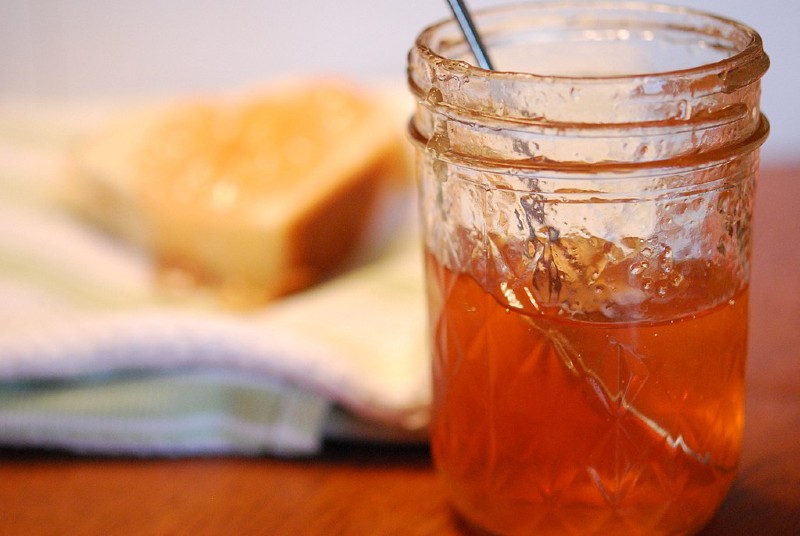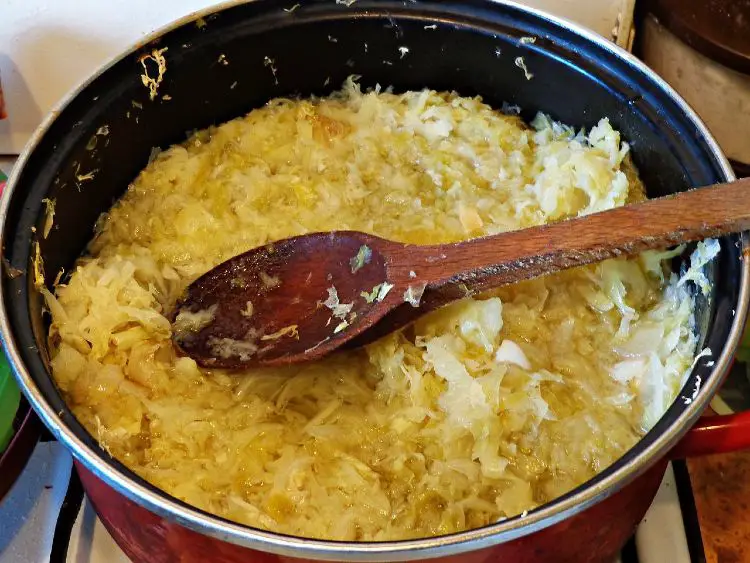Swap and Savor: Tantalizing Apple Jelly Substitutes to Try Today
Apple jelly, with its sweet and tangy flavor profile and smooth, spreadable consistency, has long been a beloved staple in kitchens around the world. Whether slathered on a warm piece of toast, used as a glaze for meats, or used in delectable desserts, apple jelly brings a unique touch of fruity delight to a variety of culinary creations.
However, there are times when using apple jelly might not be feasible. Dietary restrictions, allergies, limited availability, or simply a desire for a change in flavor can prompt the search for suitable alternatives. Regardless of the reason, this comprehensive guide is here to help you navigate the world of apple jelly substitutes.
List of Apple Jelly Substitutes
Agar-Agar
Agar-agar, a natural plant-based gelatin derived from seaweed, presents a promising alternative to traditional apple jelly. Known for its gelling properties, agar-agar can be a versatile substitute with a unique set of characteristics.
It is tasteless and odorless, making it a neutral canvas for flavor experimentation. Agar-agar is available in various forms, including powder, flakes, or bars, allowing for flexibility in usage.
Usage and Preparation Instructions
To use agar-agar as a substitute, dissolve it in liquid and bring the mixture to a boil. Once cooled, the liquid will set into a gel-like consistency. It’s essential to follow the recommended ratios for agar-agar to achieve the desired texture.
Flavor and Texture Compared to Apple Jelly
Agar-agar provides a texture similar to traditional apple jelly, but it lacks the inherent sweetness and apple flavor. This makes it an excellent candidate for adapting to both sweet and savory recipes, as you have complete control over the flavor profile. Experiment with fruit juices, spices, or other flavorings to match your desired taste.
Pectin-based Jellies
Pectin-based jellies crafted from a variety of fruits can serve as an exciting alternative to apple jelly. These jellies offer a spectrum of flavors while retaining the desired consistency for your recipes.
Different Types of Fruit-based Jellies
Consider exploring alternatives like grape, apricot, or mixed berry jellies. Each of these options introduces a distinct flavor profile that can add a delightful twist to your dishes. Grape jelly provides a deep, rich sweetness, while apricot offers a nuanced balance of sweetness and tartness. Mixed berry jellies combine the essence of various fruits, resulting in a vibrant medley of flavors.
Flavor Variations and Blending Possibilities
By selecting pectin-based jellies with complementary flavors, you can achieve a taste profile reminiscent of apple jelly. Additionally, mixing different fruit-based jellies can yield intriguing results, allowing you to tailor the flavor to your preferences.
Tips for Achieving Apple-like Texture
When substituting with fruit-based jellies, be mindful of the consistency. Ensure that the selected jelly has a smooth and spreadable texture akin to apple jelly. You might also need to adjust the quantities to match the intended outcome of your recipe.
Honey
For a natural and versatile alternative to apple jelly, honey steps onto the culinary stage with its distinct flavor and sweetening prowess.
Flavor Profile and Sweetness Compared to Apple Jelly
Honey offers a unique flavor profile characterized by its floral and sometimes earthy undertones. While differing from the apple jelly’s taste, honey’s natural sweetness can harmonize with various dishes. Depending on the type of honey used, you can explore flavors ranging from delicate to robust.
Culinary Applications and Limitations
Honey is a fantastic substitute for sweetening beverages, dressings, and desserts. However, due to its distinct flavor, it’s crucial to consider its compatibility with your dish. In some cases, the floral notes of honey might complement a recipe, while in others, they might clash.
Compatibility with Other Ingredients
Incorporate honey into recipes that can benefit from its unique taste, such as marinades, glazes, and certain baked goods. When using honey as a substitute, it’s recommended to balance its sweetness with the other flavors present in the dish.
Maple Syrup
Maple syrup, with its rich and indulgent flavor, stands as an intriguing alternative to apple jelly, adding a touch of warmth and depth to your culinary creations.
Richness of Flavor and Sweetness Levels
Maple syrup offers a distinct and luxurious taste characterized by its deep caramel notes. While its flavor differs from the bright tang of apple jelly, maple syrup’s sweetness can complement a wide range of recipes, from breakfast delights to savory dishes.
Substituting in Both Sweet and Savory Dishes
Maple syrup can be used in both sweet and savory contexts. Its versatility makes it suitable for pancake drizzles, glazing roasted meats, and enhancing the flavors of sauces and dressings. However, be mindful of its robust flavor and adjust quantities accordingly.
Balancing Maple Flavor with Existing Recipes
When substituting with maple syrup, consider the overall flavor balance of your dish. Depending on the recipe, you might need to tweak other components to ensure a harmonious taste profile. Experimentation will guide you toward the perfect equilibrium.
Fruit Compotes
Fruit compotes, celebrated for their luscious texture and vibrant flavors, emerge as a creative and natural alternative to apple jelly, bringing a burst of fruity goodness to your dishes.
Creating Apple-like Texture Using Cooked Fruits
Compotes are made by gently simmering fruits with sugar and sometimes spices until they soften and release their juices. This process results in a texture reminiscent of apple jelly, making compotes an excellent substitute for achieving that delightful spreadable consistency.
Customizing Flavors with Various Fruits and Spices
One of the key advantages of fruit compotes is their versatility. You can craft compotes using a variety of fruits, from berries and stone fruits to apples themselves. Experiment with different fruit combinations and enhance their profiles with spices like cinnamon, nutmeg, or citrus zest to craft unique flavors.
Using Fruit Compotes in Desserts and Spreads
Fruit compotes shine as toppings for ice cream, yogurt, and pancakes, but they’re equally at home in savory dishes, such as glazes for roasted meats or accompaniments to cheese platters. Their ability to blend sweetness and tanginess offers a dynamic interplay of flavors that can enhance both sweet and savory dishes.
Fruit Preserves
Fruit preserves, with their vibrant flavors and varied textures, present an enticing alternative to apple jelly, offering a spectrum of taste experiences for your culinary creations.
Flavor and Texture Contrasts with Apple Jelly
While fruit preserves share some similarities with apple jelly, they often retain the natural texture of the fruit they’re made from. This means that while they may lack the smooth consistency of apple jelly, they bring a delightful burst of fruitiness and varying levels of sweetness to your dishes.
Pairing Preserves with Different Foods
Fruit preserves offer a world of possibilities when it comes to pairing with various foods. Spread them on toast, use them as a filling for pastries, or incorporate them into sauces and glazes for meats. Their texture and taste can add depth and complexity to both sweet and savory dishes.
Adjusting Sweetness and Cooking Techniques
Since fruit preserves contain whole or pieces of fruit, they often have a more robust flavor than apple jelly. Depending on the preserve you choose, you might need to adjust the sweetness level of your dish accordingly. Experiment with different preserves to find the perfect match for your recipes.
Reduction Sauces
Reduction sauces, known for their concentrated flavors and versatile applications, emerge as a dynamic alternative to apple jelly, offering a culinary experience that elevates both sweet and savory dishes.
Creating Concentrated Fruit Reductions
Reduction sauces are crafted by simmering liquids, often fruit juices, until they thicken and intensify in flavor. This reduction process results in a concentrated essence of the fruit, allowing you to capture the fruity profile of apple jelly while showcasing its natural sweetness and tartness.
Application in Both Sweet and Savory Dishes
Reduction sauces have the remarkable ability to transcend the boundaries between sweet and savory realms. Drizzle them over desserts like cakes and ice creams for an intensified fruit flavor, or use them as a glaze for meats and roasted vegetables to infuse dishes with a touch of elegance and depth.
Balancing Flavors and Consistency
When substituting with reduction sauces, consider the balance of flavors in your recipe. The concentrated nature of these sauces means that a little can go a long way, so be mindful of achieving the desired level of sweetness and intensity without overwhelming the dish.
Chia Seed Jam
Chia seed jam, a nutritious and simple alternative, offers a wholesome twist on traditional apple jelly, bringing a delightful combination of texture, flavor, and health benefits to your culinary repertoire. Chia seeds absorb liquid and expand, creating a gel-like texture that resembles the consistency of apple jelly.
Creating Chia Seed Jam
To create chia seed jam, combine chia seeds with your choice of fruit puree or mashed fruit, along with a sweetener if desired. Allow the mixture to sit and thicken, resulting in a jam-like consistency. The chia seeds add a subtle crunch that sets this alternative apart.
Flavor Customization and Culinary Uses
Chia seed jam can be customized with various fruits, allowing you to experiment with different flavors and combinations. Spread it on toast, blend it into yogurt, or use it as a topping for oatmeal or pancakes. Chia seed jam’s nutritional profile and unique texture can bring a satisfying and health-conscious element to your meals.
Citrus Marmalade
Citrus marmalade, a zesty and tangy alternative, offers a burst of bright flavors that can stand in for apple jelly, infusing dishes with a refreshing and vibrant twist.
Tangy and Zesty Flavor Profile
Citrus marmalade is renowned for its intense citrus flavor, which ranges from sweet to pleasantly bitter. While distinct from the apple jelly’s taste, this tangy profile can provide a lively contrast and complement various dishes.
Culinary Applications and Pairings
Citrus marmalade adds a dynamic twist to both sweet and savory recipes. Spread it on toast or pastries for a zesty kick, or incorporate it into sauces, dressings, or marinades to add depth and brightness. Its versatility makes it suitable for a wide range of culinary creations.
Balancing Flavors in Recipes
When using citrus marmalade as a substitute, consider the overall flavor balance of your dish. Adjust the quantity of marmalade to achieve the desired level of tanginess and sweetness, ensuring that it harmonizes with other components of your recipe.
Fruit Syrups
Fruit syrups, with their concentrated fruity essence and versatility, present a delightful alternative to apple jelly, offering a burst of flavor that can enhance a wide range of dishes.
Concentrated Fruity Essence
Fruit syrups are crafted by reducing fruit juices with sugar, resulting in a concentrated syrup with a pronounced fruit flavor. While differing from the texture of apple jelly, these syrups bring a burst of sweetness and fruitiness that can elevate your recipes.
Culinary Applications and Pairings
Fruit syrups offer a multitude of culinary possibilities. Drizzle them over pancakes, waffles, or desserts for a burst of fruity sweetness. Incorporate them into cocktails, mocktails, and beverages to add a refreshing twist. They can also be used as a glaze for meats or a dressing for salads, offering a versatile range of applications.
Adjusting Sweetness and Intensity
When substituting with fruit syrups, consider the intensity of the flavor and sweetness. Due to their concentrated nature, you might need to adjust the amount used in your recipes. Tailor the quantity to achieve the desired level of flavor without overpowering the dish.
Gelatin-based Alternatives
Gelatin-based alternatives, tailored for both traditional and plant-based diets, offer a versatile solution for achieving the desired texture and consistency of apple jelly without compromising on dietary preferences.
Vegetarian and Vegan Gelatin Substitutes
Gelatin substitutes crafted from vegetarian or vegan sources, such as agar-agar or carrageenan, have gained popularity due to their compatibility with various dietary choices. These alternatives replicate the gelling properties of traditional gelatin while remaining cruelty-free.
Achieving Desired Consistency and Mouthfeel
When opting for gelatin substitutes, follow the usage instructions carefully. Dissolve the substitute in liquid, heat it to activate the gelling process, and allow it to set. This process will result in a firm and spreadable texture, akin to apple jelly, making it an effective replacement in a variety of recipes.
Combining Gelatin Alternatives with Apple Flavors
Gelatin alternatives offer a neutral taste, providing you with a blank canvas to infuse with the flavor of your choice. To replicate the essence of apple jelly, incorporate apple juice or other apple-related ingredients during the preparation process. This ensures that your creation captures the essence of apple while maintaining the desired consistency.
Other Creative Alternatives
Beyond the conventional substitutes mentioned earlier, there are a few other creative options to consider when searching for alternatives to apple jelly. These alternatives offer unique flavors and textures that can add a distinctive twist to your dishes. Let’s explore some of these unconventional substitutes:
Agave Nectar
This natural sweetener, derived from the agave plant, can offer a mild and gentle sweetness to your dishes. It’s particularly well-suited for beverages, dressings, and recipes that benefit from a subtler sweet flavor.
Fruit Butter
Fruit butters, such as pumpkin or pear butter, bring a rich, velvety texture and a deep, fruity taste. They can serve as flavorful spreads, glazes, or even condiments for various dishes.
Molasses
With its robust, bittersweet flavor, molasses can add depth to both sweet and savory recipes. It’s especially popular in baking and can be used to create rich, dark glazes for meats.
Chutneys
Chutneys are a mix of fruits, spices, and seasonings that create a unique blend of sweet, tangy, and savory flavors. They’re excellent for adding complexity to dishes and can be used as spreads or accompaniments.
Citrus Zest and Juice
Fresh citrus zest and juice, such as from oranges, lemons, or limes, can provide a burst of tangy and vibrant flavor to your dishes. They work well as glazes, marinades, or even in vinaigrettes.
Fruit Juice Concentrates
Concentrated fruit juices, like grape or pomegranate concentrate, can offer a potent burst of fruitiness when used as a glaze or marinade.
Recipe Showcases: Using Apple Jelly Substitutes
Using apple jelly substitutes into your recipes opens up a world of culinary possibilities. Here are some delectable recipe showcases that showcase the versatility of these substitutes:
Agar-Agar Apple-Infused Cubes
Ingredients:
- 1 cup apple juice
- 1 tsp agar-agar powder
- 2 tbsp sweetener of choice (optional)
Instructions:
- In a saucepan, combine apple juice and sweetener (if using). Bring to a simmer.
- Sprinkle agar-agar powder evenly over the liquid while whisking continuously.
- Continue simmering and whisking for 2-3 minutes until the agar-agar is fully dissolved.
- Pour the mixture into a shallow dish and let it cool until set.
- Once set, cut the agar-agar mixture into small cubes. Use these apple-infused cubes as a creative addition to desserts or beverages.
Pectin-Free Mixed Berry Spread
Ingredients:
- 2 cups mixed berries (strawberries, blueberries, raspberries)
- 1/4 cup fruit-based jelly (such as grape or mixed berry)
- 1 tbsp lemon juice
- 2 tbsp honey (adjust to taste)
Instructions:
- In a saucepan, combine mixed berries and cook over low heat until they release their juices and soften.
- Mash the berries with a fork or potato masher to achieve your desired texture.
- Add the fruit-based jelly, lemon juice, and honey. Stir well and let it simmer for a few more minutes.
- Taste and adjust sweetness if needed.
- Allow the mixture to cool, then transfer it to a jar. Use this mixed berry spread on toast, yogurt, or as a filling for pastries.
Honey-Blended Apple Glaze
Ingredients:
- 1/2 cup apple juice
- 1/4 cup honey
- 1 tsp lemon juice
- Pinch of cinnamon (optional)
Instructions:
- In a small saucepan, combine apple juice, honey, and lemon juice. Add a pinch of cinnamon if desired.
- Simmer the mixture over low heat, stirring occasionally, until it reduces and thickens into a glaze-like consistency.
- Remove from heat and let it cool slightly.
- Brush the honey-blended apple glaze onto roasted meats, baked goods, or use it as a drizzle for desserts.




